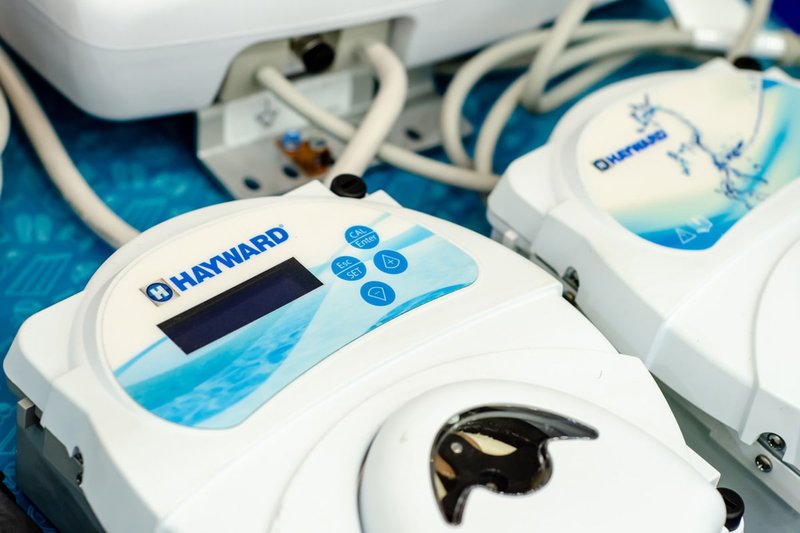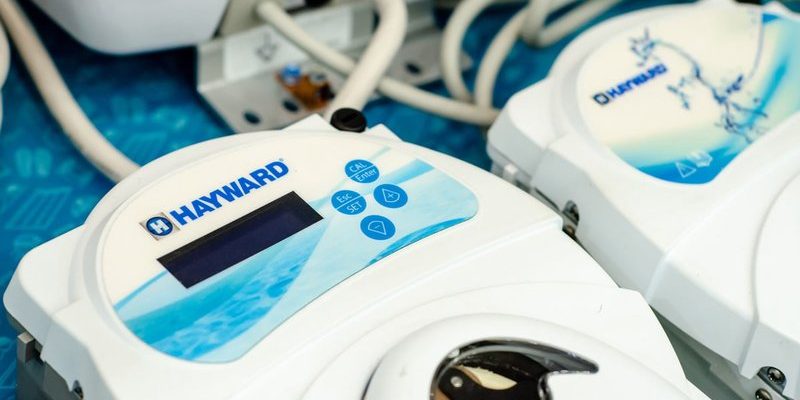
If you’re new to Hayward systems, or pool remotes in general, syncing things up can seem like a code only pool techs know. Maybe you just replaced your remote, the batteries died, or you upgraded your pump or heater. Whatever the reason, you’re probably wondering: “Why won’t this thing talk to my pool equipment?” Let’s break it down step by step, using plain language and plenty of real-world examples. Imagine we’re outside by your pool, remote in hand, walking through this together.
Understanding Hayward Pool Remotes: Types and Basics
Hayward makes several types of pool remotes, and honestly, knowing which one you have makes a world of difference. There’s the classic Hayward AquaPod, a waterproof remote you can float in the pool with, and then there’s wireless wall-mount panels and handheld remotes tied to the ProLogic or OmniLogic automation systems. Each remote model “talks” to your pump or heater a bit differently.
Here’s the thing: every remote relies on a specific code or pairing process to connect with your Hayward pump or heater. Think of it like Bluetooth headphones; if they’re not paired right, you won’t hear a sound. If you’re not sure about your model, check for the name on the remote itself or in your pool’s control panel menu — it’s usually right on the front or back. This tiny detail can help you find the exact instructions and avoid a lot of frustration.
Most Hayward pool remotes run off batteries and communicate wirelessly with a central control box—sometimes called a base station or main board—installed near your pump and heater. That’s the “hub,” and if your remote isn’t talking to the hub, nothing else happens. So, before you start mashing buttons, it pays to know your remote’s language and where the communication starts.
When and Why You’ll Need to Sync Your Hayward Remote
Syncing isn’t just for new remotes or brand-new pools. You might need to resync anytime:
- You replace or reset your remote
- The batteries die and the remote loses its memory
- You upgrade or change your pool pump or heater
- There’s been a power outage or system reset
- Your remote suddenly stops controlling certain features
Syncing is basically telling your remote and your pump or heater to “shake hands” and agree to work together. If the handshake fails, you’re stuck fiddling by the equipment pad instead of relaxing in your pool. The pairing process ensures the remote is using the right code and frequency, so it doesn’t accidentally talk to your neighbor’s pool—or some mysterious device you don’t want controlling your water jets.
The bottom line: If your Hayward remote isn’t responding, or your pool heater fires up at random, odds are it’s time to pair or reset everything so they’re on the same page.
Prep Work: What You’ll Need (and Double-Check First)
Before you start syncing, let’s cover the basics—just like prepping ingredients before you cook. The process will go smoother if you have everything ready:
- Your Hayward pool remote (AquaPod, wireless wall remote, or handheld)
- Fresh batteries installed in the remote
- Access to your main Hayward pool control panel (usually near the pump or heater)
- Any manual or quick start guide that came with your remote—if available
Here’s something a lot of folks miss: Low batteries can cause the remote to drop connection or fail to sync, even if the buttons light up. Always pop in a new set before troubleshooting. Next, make sure you’re close enough to the control panel base—usually within 30–50 feet, though some systems might reach further.
Quick tip: If you’ve never done this before, take a phone photo of your control panel’s wiring and current settings—just in case you need to reset or reference them later. And don’t forget, for certain Hayward models, there’s a “reset” or “pair” button hidden inside the control box panel. It’s small, but it matters!
Step-by-Step: How To Sync Your Hayward Pool Remote With Pump Or Heater
Alright, let’s get to the main event. Here’s a slow, visual walkthrough of the most common syncing process for Hayward pool remotes—and how it connects to your pump or heater:
1. Power up everything
Make sure the pool control panel, pump, heater, and the remote itself all have power. Double check circuit breakers if anything seems dead.
2. Open the Control Panel
Head to the main Hayward control box. Open it up so you can see the main board. For your safety, avoid touching exposed wiring—just look for the labeled buttons or menu screen.
3. Enter Pairing or Sync Mode
Most Hayward systems have a “Pair” or “Learn” button. Press and hold this button until you see a blinking light or a message on the panel display (usually 3–5 seconds). This signals the system is ready for a new device.
4. Activate the Remote
Now, quickly (within 30 seconds), press and hold the sync or pairing button on your remote. On AquaPods, it’s often a sequence of buttons; on other remotes, there may be a dedicated “connect” button. Watch for a flashing light or syncing message.
5. Confirm the Sync
When both devices stop blinking, or when the panel says “Device Added” or “Remote Connected,” you’re good. Test by pressing any remote button—your pump should start, heater should fire up, or pool lights should turn on.
Extra Tips For Specific Hayward Models
Some Hayward remotes enter pairing mode through the touch screen menu, while others use button sequences. If you’re feeling stuck, dig up your model’s manual or search online for the exact button combo. And don’t be surprised if you need to try a couple of times—sometimes interference or low batteries can cause a false start.
Troubleshooting: When Syncing Doesn’t Work
Here’s the thing—sometimes even when you follow the steps perfectly, the remote still won’t sync. It’s normal (and honestly, kind of annoying). Here’s how to troubleshoot like a pro:
If the remote doesn’t pair:
- Double-check for fresh, properly inserted batteries
- Ensure you’re within range of the control panel base
- Confirm the pool control panel is powered on
- Repeat the pairing steps slowly—sometimes timing is picky
If only some features work:
- Make sure your control panel is set to recognize all device types (pump, heater, lights, etc.)
- Check for firmware updates or system resets—older software may not play nice with new remotes
If nothing you do works:
- Try resetting the remote to factory settings (usually a hidden button or on-screen menu option)
- Power cycle everything—turn off the control panel, wait 30 seconds, and restart
- If all else fails, call Hayward support or your pool installer (sometimes the main board needs a hard reset or repair)
Don’t feel bad if you’re stumped. Even pros can spend an afternoon chasing down why a remote won’t sync. Patience (and a fresh set of batteries) is key.
Common Problems and Their Quick Fixes
A lot of pool owners find themselves stuck at similar points. You press the sync button, but nothing happens—or your remote controls the pump but not the heater. Usually, the culprit is simple. Here are the usual suspects:
- Dead battery: The most overlooked cause! Always start here.
- Out of sync after power outage: Control panels sometimes forget paired devices after being powered off. Try re-syncing.
- Multiple remotes: If you have more than one remote, syncing one can drop the other; you might need to pair all remotes one after another.
- Interference: Wireless signals can clash with other devices—cordless phones, Wi-Fi routers, even nearby metal.
- Wrong pairing mode: Make sure you’re using the right sequence for your exact Hayward model.
Here’s a fun story: I once helped a neighbor who was ready to toss her remote in the pool because it wouldn’t sync. Turns out, she’d accidentally set the remote to “spa mode,” not pool mode. One button press later, and suddenly her heater fired up right on cue. Sometimes, it’s the little things.
Maintaining Your Hayward Remote: Tips To Avoid Future Sync Issues
Pairing a Hayward pool remote isn’t just a one-and-done deal. A little routine care can keep your system humming for years—and spare you from another round of head-scratching troubleshooting.
- Replace remote batteries at least once a season, even if they seem fine
- Store the remote out of direct sun and rain—less moisture means fewer glitches
- Keep the control panel and remote firmware up to date when possible
- After big storms or outages, check your pairing—sometimes systems reset automatically
- If things get weird (buttons lag, features disappear), do a quick pair or reset—often it’s a fast fix
You might be wondering if a universal remote will work with your Hayward system. Generally, brand-specific remotes (like Hayward’s) are designed to work best with Hayward control panels and gear. Universal remotes might not support all features, or could require tricky workarounds. Honestly, sticking with the original is your safest bet, especially if you want all the bells and whistles working smoothly.
Comparing Alternatives: Universal Remotes vs. Hayward Brand Remotes
Some pool owners get tempted by “universal” pool remotes, hoping to save money or replace a lost Hayward device. Here’s what you need to know.
Universal Remotes:
They claim to work with multiple brands, and sometimes they do—for basic pump or light controls. But if you want full access (like heater temp, spa jets, or custom lighting), you’ll likely lose out. Plus, syncing a universal remote often requires time-consuming code entry or extra programming, and not every Hayward model is supported.
Hayward Brand Remotes:
These are designed to pair flawlessly with the Hayward control panels, pumps, and heaters you already have. You’ll get:
- Full feature access (including advanced automation)
- Quick sync and troubleshooting steps
- Better support if things go wrong
In my experience, if you care about every feature working—and don’t want to spend afternoons squinting at code charts—sticking with a Hayward remote just saves headaches. But it’s your call!
Final Thoughts: Enjoying A Seamless Pool Experience
Syncing your Hayward pool remote with your pump or heater doesn’t have to feel like cracking a secret code. It’s really about making sure your remote and your pool gear “speak” the same language so you can enjoy effortless control from anywhere—or even from the pool itself. With a steady approach, a bit of patience, and fresh batteries, you can get everything paired up and running smoothly.
If you run into snags, don’t sweat it—almost every pool owner has been there, staring at a blinking remote and wondering what’s next. Go step by step, take your time, and trust that it’s usually something simple. In the end, those small moments of setup mean big moments of relaxation and fun—poolside, just the way you planned.
